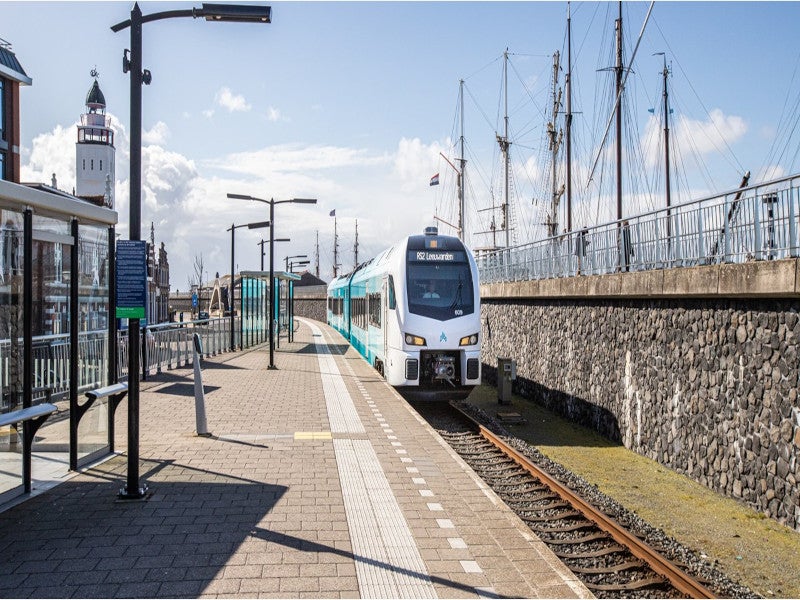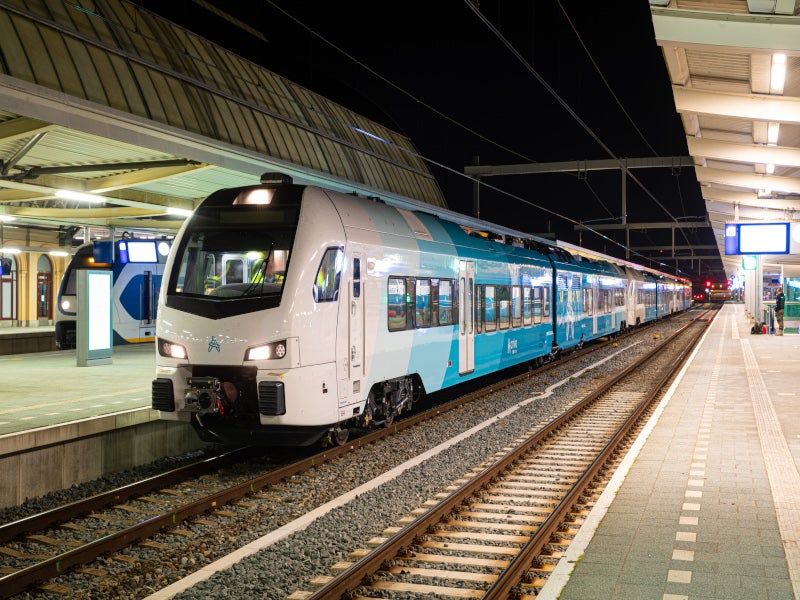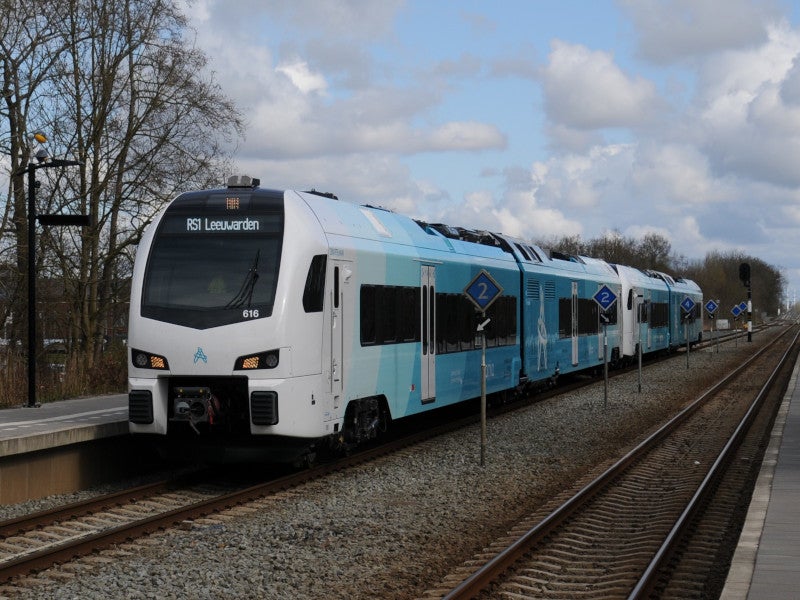WINK is a low-floor regional train manufactured by the Swiss rolling stock company Stadler Rail. WINK is a German acronym that stands for convertible, innovative short train for local transportation. The train is part of Stadler’s sustainable portfolio of regional trains.
Introduced in 2017, the two-car multiple-unit train is designed for branch lines with minimal passenger traffic.
The first Stadler WINK train began operations in April 2021 in the Groningen and Friesland provinces of Noordelijke Lijnen, the Netherlands, for railway operator Arriva Netherlands.
Arriva also launched the WINK trains as part of its first night services from Maastricht to Schiphol in December 2022. The night train connects Maastricht in the south of the country with major Dutch towns including Schiphol Airport.
WINK trains design and features
The WINK train’s modular design is based on the FLIRT train, which already has more than 1,400 units in operation. The modular design ensures a quick construction time and optimal operational availability.
The end bogies, like the Flirt’s, are powered by the cab. The key difference between WINK and the Flirt is the central powerpack. The trains have a completely accessible driving unit placed between the two carriages. They are outfitted with energy-generating components, in addition to traction elements and auxiliary systems, which offer a very adaptable driving system.
The Stadler WINK has an axle load of 18t and includes an extra-wide seat pitch. It can transport up to 275 passengers and has approximately 150 seats. It can achieve top speeds of up to 160km/h with a maximum traction of 1,000kW, depending on the model.
The trains are 2.82m wide and 4.12m high and have floor heights ranging between 78cm and 114.5cm. The train’s superstructure is made of welded extruded aluminium.
Stadler WINK interiors and passenger amenities
The interiors of the WINK train carriages are bright and user-friendly, with wide window panels. Each side of the train has three entrance doors. The level entrance with sliding steps provides easy access for wheelchairs, prams and bicycles.
The trains have air suspension, power sockets, conditioned passenger compartments, a passenger counting system and closed toilet systems. They also feature an Ethernet-based passenger information system with large TFT panels and WiFi connectivity.
The rail cars are equipped with an ergonomically designed driver’s cab.
Stadler WINK propulsion system details
The WINK trains feature a versatile power module that can be outfitted with either typical energy-generating and storage components or parts that allow for zero-emission operation.
The trains are available as diesel multiple units operated either on fossil fuel or hydrotreated vegetable oil. They are also available as bimodal multiple units operating with a combustion engine for non-electrified lines or pantograph for electrified lines.
In addition, the trains are available as electric multiple units with a pantograph and batteries or as independently powered units with batteries.
Orders and deliveries of the Stadler WINK
Arriva Netherlands placed the first order worth €17m ($20m) for 18 two-car WINK units in November 2017, for trains to begin service in Friesland and Groningen.
The contract runs until 2035 and includes the vehicles’ future conversion to zero-emission operation, as well as the upgrade of Arriva’s existing 51 Stadler Gelenktriebwagen units with a new passenger information system and batteries for storing braking energy.
The vehicles will switch to zero-emission operation after the electrification of the Leeuwarden-Groningen route, which is scheduled for completion by 2025.






